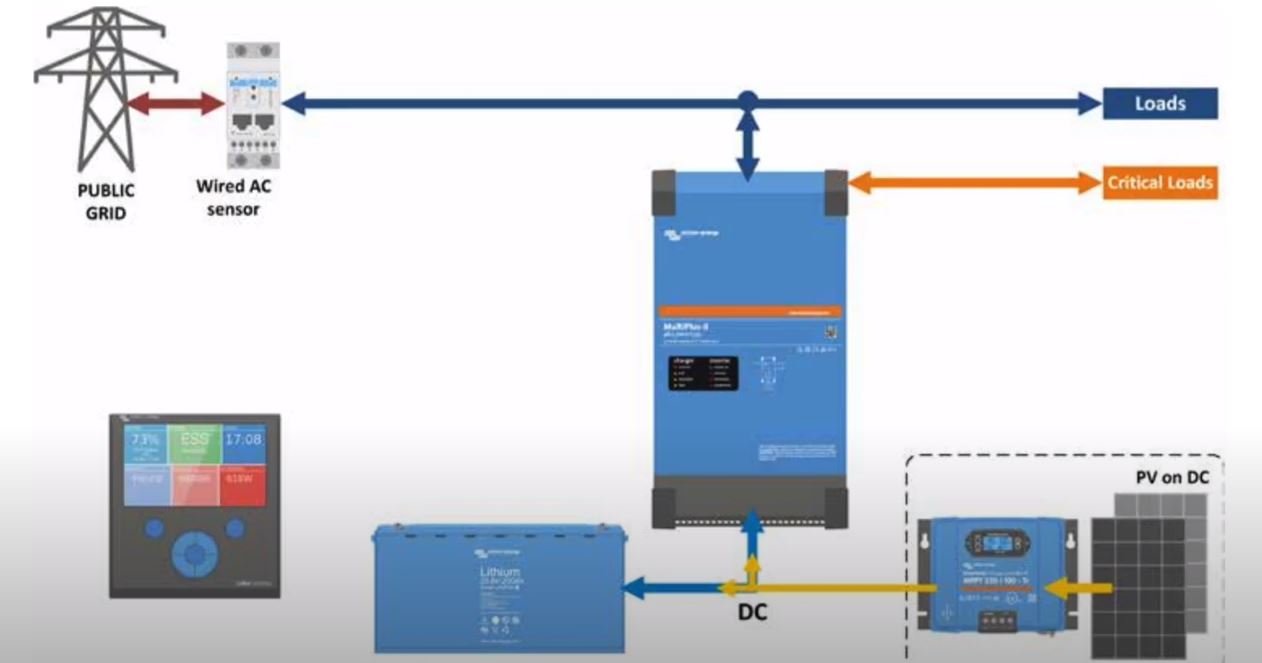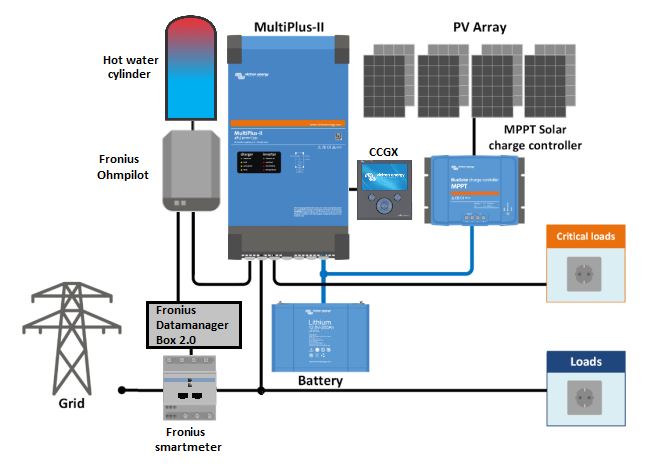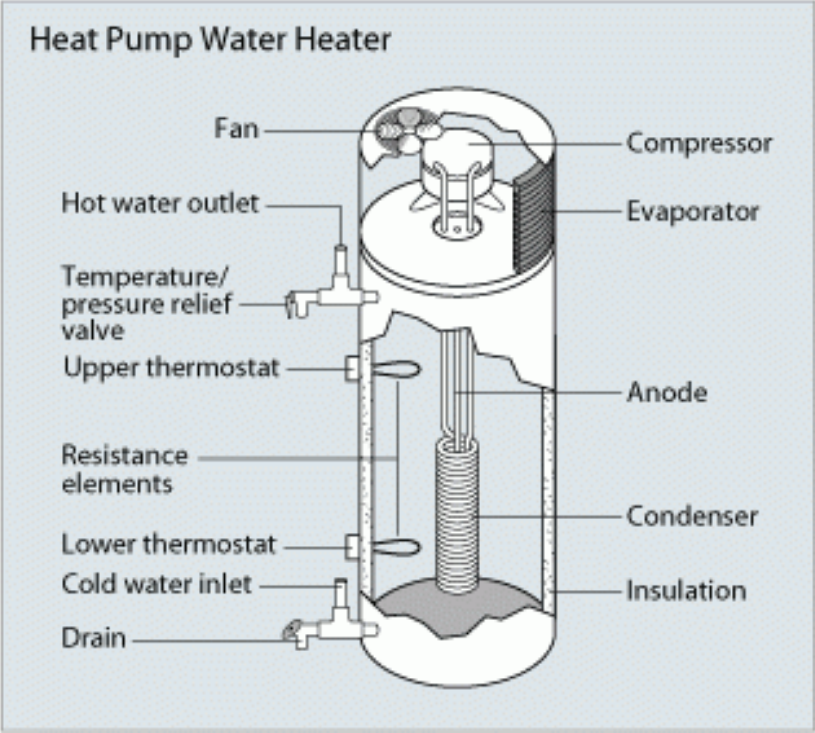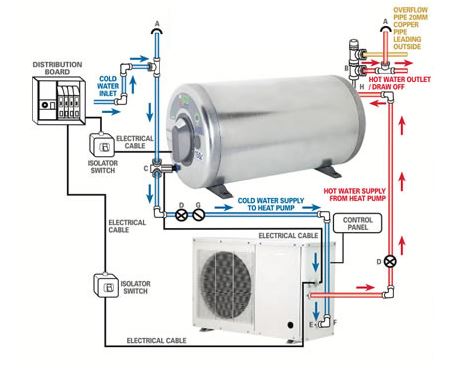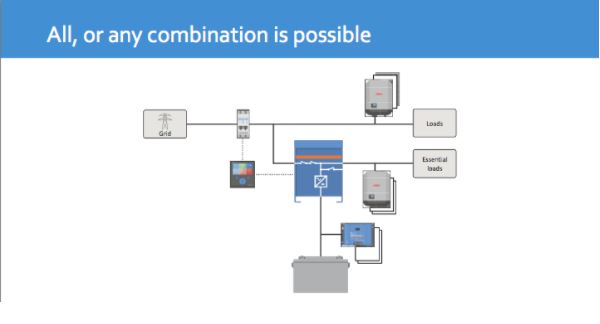Hello,
I would like to find out the answers to these questions - would greatly appreciate any assistance:
- Can I connect many high load items to AC OUT 2? Like 2 water heaters, 1 oven and a few aircons... is there a limit? I understand that these will be switched off when there grid fails which I am fine with but I want to install solar and hopefully use some of that power to take care of some of the load when it's active
- Once I get solar and there is a grid failure, will the solar continue to charge the batteries to keep the critical loads on AC OUT 1 up? Or will solar stop working and I will depend fully on battery which won't be charged until grid is back up?
- I see my battery is showing in a constant charging state even when it's at 100%... is this normal or am I overcharging it? Which I hear is bad
Thanks!!
My site on VRM is called "RIAAD ABDULLA"
Inverter = MultiPlus-II 48/3000/35-32 (ACOut2 switchable)
Battery = Pylontech US3000 + US2000

